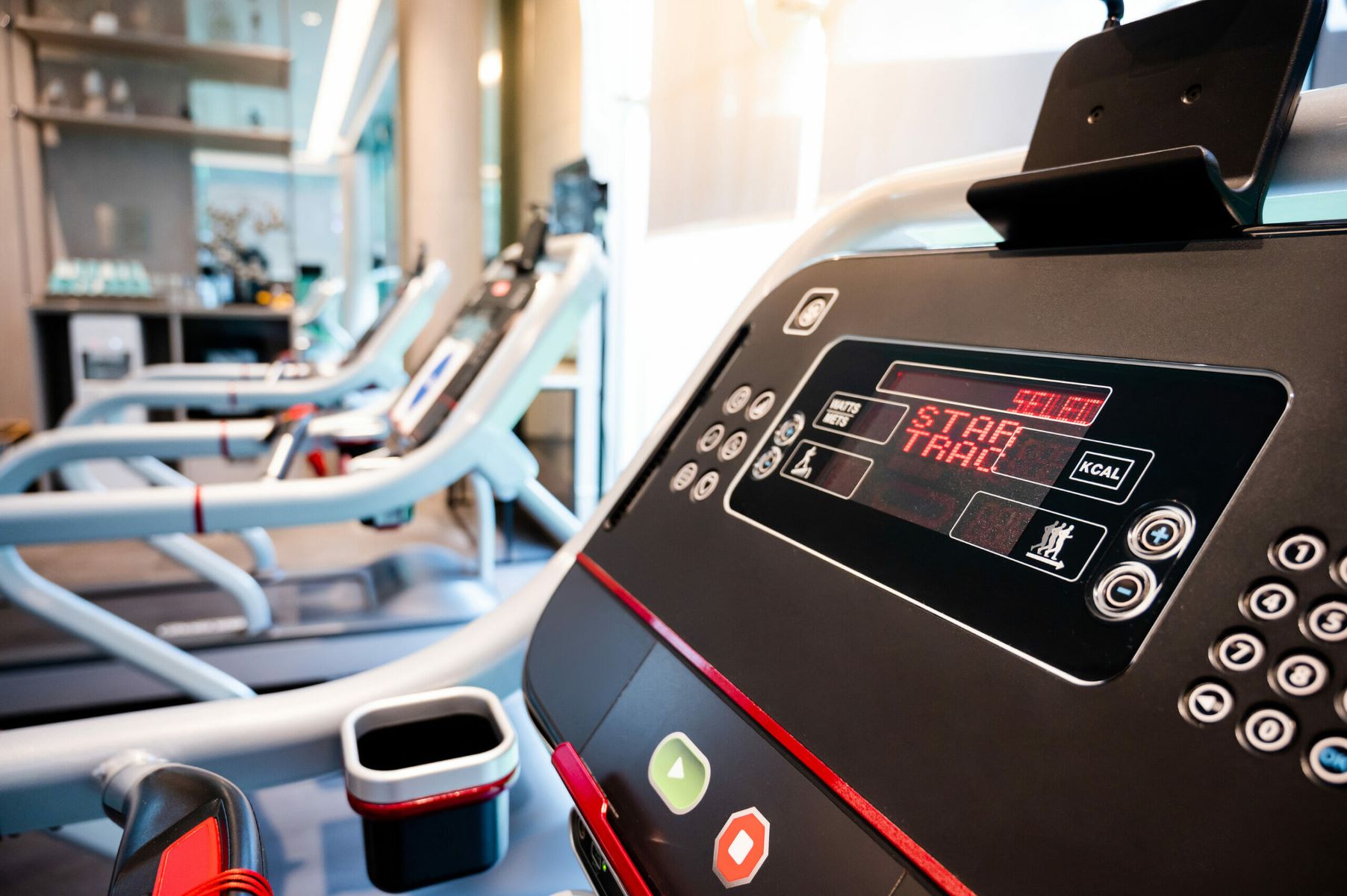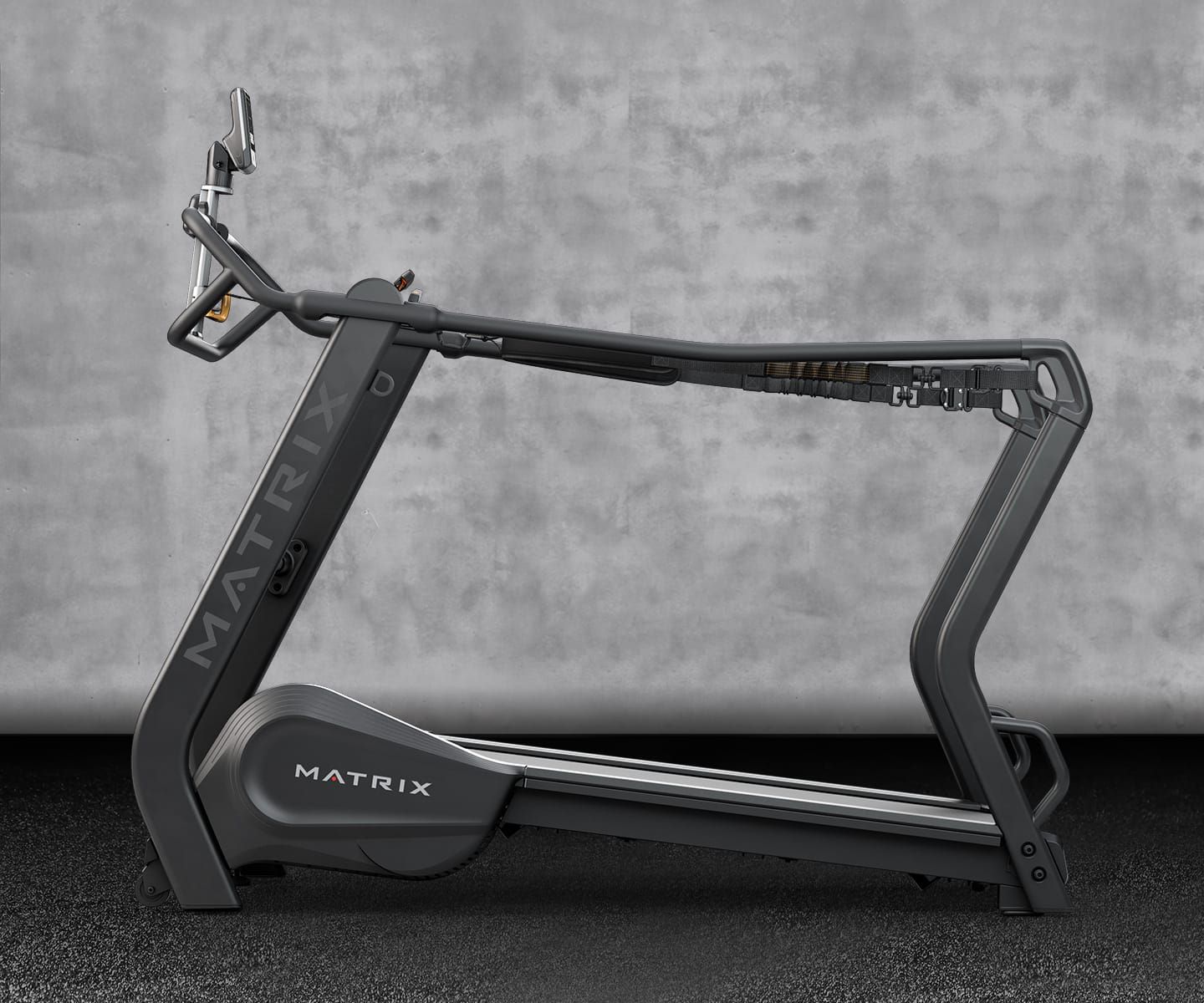Home>Misc>Featured>What Is A Good Heart Rate During Exercise


Featured
What Is A Good Heart Rate During Exercise
Published: October 2, 2023
Discover the ideal heart rate range for optimal exercise performance. Read this comprehensive guide on determining a featured heart rate during physical activity.
Introduction
Your heart rate during exercise is an essential indicator of your cardiovascular fitness and overall health. It provides valuable insights into your body’s response to physical exertion and can help you optimize your workouts for maximum efficiency and safety. By understanding what constitutes a good heart rate during exercise and how to monitor it, you can tailor your fitness routine to achieve better results and reduce the risk of overexertion.
During exercise, your heart works harder to pump blood and oxygen to your muscles, allowing them to perform at their best. Monitoring your heart rate can provide valuable information about the intensity of your workout and ensure that you are targeting the right zones to achieve your fitness goals. Whether your goal is weight loss, cardiovascular endurance, or overall fitness improvement, maintaining the appropriate heart rate range is crucial.
This article will explore the importance of heart rate during exercise and provide insights into resting heart rate, maximum heart rate, and the target heart rate zone. We will also discuss factors that can affect heart rate during exercise and provide guidelines for monitoring it effectively. Additionally, we will examine the benefits of exercising within the target heart rate zone and discuss the concept of heart rate recovery.
Understanding how to optimize your heart rate during exercise not only helps you get the most out of your workouts but also allows you to exercise safely and avoid potential health risks. So, let’s dive in and explore the world of heart rate monitoring!
Importance of Heart Rate During Exercise
Your heart rate during exercise is a crucial factor in determining the effectiveness and safety of your workout. It serves as an indicator of how hard your cardiovascular system is working and can provide valuable insights into your fitness level and overall health.
By monitoring your heart rate during exercise, you can ensure that you are working at the appropriate intensity for your fitness goals. Whether you’re aiming to improve endurance, burn calories, or build cardiovascular fitness, maintaining the right heart rate range is essential. Working too hard can lead to overexertion and potential injuries, while not pushing hard enough may result in minimal fitness gains.
Moreover, tracking your heart rate during exercise allows you to identify and correct imbalances in your workout routine. For instance, if your heart rate remains consistently low during aerobic exercises, it may be an indication that you need to increase the intensity to reap maximum benefits. On the other hand, consistently high heart rates could suggest that you’re working at an intensity that is too challenging or potentially harmful to your health.
Additionally, monitoring your heart rate during exercise can provide valuable feedback on your cardiovascular health. A consistently elevated resting heart rate or an inability to reach your target heart rate during exercise may be signs of underlying health conditions and warrant further medical evaluation.
Understanding the dynamics of your heart rate during exercise also allows you to gauge your progress over time. As your cardiovascular fitness improves, you may notice that your heart rate decreases for the same level of exertion. It can serve as a tangible measure of your fitness level and provide the motivation to keep pushing and improving.
Overall, maintaining a good heart rate during exercise provides numerous benefits, including better workout efficiency, reduced risk of injury, improved cardiovascular health, and a better understanding of your fitness progress. By paying attention to your heart rate and adjusting your workout accordingly, you can optimize your exercise routine and achieve your fitness goals more effectively.
What is Resting Heart Rate?
Resting heart rate refers to the number of times your heart beats per minute while you are at rest. It is typically measured when you are in a relaxed state, such as when you first wake up in the morning or when you have been sitting still for some time. Resting heart rate is an important baseline measurement that provides insight into your overall cardiovascular health.
An average resting heart rate for adults typically ranges between 60 and 100 beats per minute (bpm). However, it is important to note that individual variations exist, and factors such as age, fitness level, and overall health can influence resting heart rate. Well-trained athletes, for example, may have resting heart rates below 60 bpm, indicating their cardiovascular efficiency and conditioning.
Monitoring your resting heart rate regularly can help you track your fitness progress and identify any changes or abnormalities that may warrant further attention. A decrease in resting heart rate over time is generally seen as a positive sign of improving cardiovascular fitness. On the other hand, an increase in resting heart rate may indicate various factors, such as stress, dehydration, illness, or fatigue.
Several methods can be used to measure resting heart rate. The most common approach is to take your pulse manually by placing two fingers (usually the index and middle fingers) on the wrist or neck. Count the number of beats you feel within a 60-second interval, or for a more convenient method, count for 15 seconds and multiply that number by four to calculate beats per minute.
Alternatively, wearable fitness trackers and smartwatches equipped with heart rate monitors can provide convenient and accurate measurements of resting heart rate throughout the day. These devices can also help you track trends and make it easier to notice any significant changes.
Understanding your resting heart rate is valuable for several reasons. It can serve as a baseline measurement for assessing your overall cardiovascular health and can indicate potential underlying conditions. If you consistently observe a significantly high or low resting heart rate, it is advisable to consult with a healthcare professional to determine if further evaluation is warranted.
By incorporating resting heart rate monitoring into your overall fitness routine, you can gain insights into your cardiovascular health and make informed decisions about your exercise intensity and recovery.
Definition of Maximum Heart Rate
Maximum heart rate (MHR) refers to the highest number of times your heart can beat in one minute during maximum exertion. It is a key measure used to determine target heart rate zones and guide exercise intensity. Understanding your maximum heart rate can help you optimize your workouts and achieve your fitness goals.
Typically, maximum heart rate is estimated using a simple formula: subtracting your age from 220. However, it is important to note that this formula provides a general estimate and may not be accurate for everyone. Individual variations, including fitness level, genetics, and health conditions, can influence maximum heart rate.
For example, well-trained athletes may have a higher maximum heart rate compared to sedentary individuals of the same age. Conversely, individuals with certain heart conditions or health concerns may have a lower maximum heart rate. It is also important to keep in mind that maximum heart rate tends to decrease with age.
While the 220-minus-age formula is a useful starting point, it is recommended to consult with a healthcare professional for a more accurate assessment of your maximum heart rate. They can conduct specific tests, such as a graded exercise test, to determine your maximum heart rate based on your individual physiology.
Understanding your maximum heart rate enables you to identify appropriate target heart rate zones that align with your fitness goals. These zones are defined as a range of heart rates that correspond to different exercise intensities. They help you monitor and adjust the intensity of your workouts to achieve specific outcomes, such as fat burning, aerobic conditioning, or endurance training.
By working within your target heart rate zone, you can ensure that you are exercising at a level that provides optimal benefits while minimizing the risk of overexertion or injury. Your target heart rate zones are typically expressed as a percentage range of your maximum heart rate.
For example, a moderate-intensity aerobic workout may aim for a target heart rate zone of 50% to 70% of your maximum heart rate, while a high-intensity interval training session may target a zone of 80% to 90%. These ranges may vary depending on your fitness level and specific goals, so it is essential to personalize them accordingly.
Understanding your maximum heart rate is crucial for tailoring your workouts and achieving desired fitness outcomes. By incorporating knowledge of your maximum heart rate into your training regimen, you can optimize the effectiveness and efficiency of your workouts and progress towards your fitness goals.
Target Heart Rate Zone
Your target heart rate zone is a range of heart rates that corresponds to a specific exercise intensity level. It is an essential tool for optimizing your workouts and achieving your desired fitness outcomes. By understanding and maintaining your target heart rate zone, you can ensure that you’re exercising at the right intensity to achieve maximum benefits.
The target heart rate zone is typically expressed as a percentage range of your maximum heart rate (MHR). The American Heart Association recommends a moderate-intensity target heart rate zone of 50% to 70% of your MHR for most adults. This range corresponds to a comfortable but challenging level of exercise that improves cardiovascular fitness, burns calories, and promotes overall health.
For example, if your estimated maximum heart rate is 180 beats per minute (bpm), your target heart rate zone for moderate-intensity exercise would be 90 to 126 bpm (50% to 70% of 180 bpm). Working within this range ensures that your heart is pumping efficiently, delivering oxygen and nutrients to your muscles, and improving your endurance.
It is important to note that the target heart rate zone may vary depending on your fitness goals and individual factors such as age, fitness level, and any underlying health conditions. For example, if your goal is to improve aerobic capacity, you may need to work at a higher intensity, in the range of 70% to 85% of your MHR. On the other hand, if you’re just starting out or have specific health concerns, a lower intensity within the 50% to 60% range may be appropriate.
To ensure you’re in your target heart rate zone during exercise, it’s essential to monitor your heart rate accurately. There are several methods to measure your heart rate, including using a heart rate monitor, fitness tracker, or taking your pulse manually. By monitoring your heart rate periodically throughout your workout, you can adjust your intensity to stay within your target zone.
Keeping your heart rate within the target zone allows you to reap the benefits of your workout while minimizing the risk of overexertion or injury. It ensures that you’re working at an intensity level that challenges your cardiovascular system without pushing it beyond its limits.
Remember that the target heart rate zone is a guideline, and individual variations may exist. It is essential to listen to your body and make adjustments as necessary based on how you feel during exercise. If you experience any discomfort or unusual symptoms, it’s important to consult with a healthcare professional.
Incorporating your target heart rate zone into your fitness routine can help you optimize your workouts, achieve specific goals, and improve your overall cardiovascular health. It provides a valuable framework for monitoring and adjusting your exercise intensity, ensuring that each workout is effective and tailored to your unique needs.
Factors Affecting Heart Rate During Exercise
The heart rate experienced during exercise is influenced by various factors. Understanding these factors can help you make appropriate adjustments to your workout routine and optimize your exercise intensity. Here are some key factors that can affect heart rate during exercise:
- Age: As we age, our maximum heart rate tends to decrease. This means that for the same level of exercise, older individuals may have a lower heart rate compared to younger individuals.
- Fitness Level: Well-trained individuals tend to have lower heart rates at a given exercise intensity compared to sedentary individuals. Regular exercise improves cardiovascular efficiency, allowing the heart to pump blood more effectively and efficiently.
- Exercise Intensity: The level of intensity directly affects heart rate. Higher-intensity exercises will result in a higher heart rate, while lower-intensity exercises will result in a lower heart rate. This is because the heart needs to work harder to pump oxygenated blood to the muscles during more intense activities.
- Body Size and Composition: Larger individuals typically have a higher heart rate during exercise because they have a higher cardiac output requirement to supply blood to their larger muscle mass. Additionally, individuals with more lean muscle mass may have a higher heart rate due to increased oxygen demands.
- Environmental Factors: Temperature, humidity, altitude, and even air quality can affect heart rate during exercise. Hot and humid environments can increase heart rate as the body works harder to maintain its core temperature. Higher altitudes can lead to increased heart rate due to reduced oxygen availability.
- Stress and Emotional State: Mental and emotional factors can impact heart rate during exercise. Stress, anxiety, and excitement can increase heart rate, even at lower exercise intensities.
- Medications and Stimulants: Certain medications, such as beta-blockers or stimulants like caffeine, can influence heart rate. It is important to be aware of any medication or substances you are taking that may affect your heart rate response during exercise.
It is important to remember that while these factors can have an impact on heart rate during exercise, they may vary from person to person. It’s crucial to listen to your body and monitor your heart rate to ensure that you are exercising within a safe and effective range.
By considering these factors and making necessary adjustments to your exercise routine, you can tailor your workouts to achieve optimal results and improve your cardiovascular fitness.
Guidelines for Monitoring Heart Rate During Exercise
Monitoring your heart rate during exercise is crucial for ensuring that you are working out at the right intensity level to achieve your fitness goals while maintaining safety. Here are some guidelines to help you effectively monitor your heart rate during exercise:
- Determine your target heart rate zone: Calculate your target heart rate zone based on your age and fitness goals. This will provide you with a range within which you should aim to keep your heart rate during exercise.
- Choose the right monitoring method: There are various methods available to monitor your heart rate during exercise. You can use a heart rate monitor, a fitness tracker, a smartwatch, or manually measure your pulse. Select the method that is most convenient and comfortable for you.
- Make sure the monitor is accurate: If you’re using an electronic device to monitor your heart rate, ensure that it is properly calibrated and accurately measuring your heart rate. Consult the manufacturer’s instructions or consult a healthcare professional for guidance.
- Place the monitor correctly: If you’re using a chest strap or wrist-based monitor, make sure it is positioned correctly according to the manufacturer’s instructions. This will ensure accurate readings during your workout.
- Monitor during different types of exercises: Measure your heart rate during a variety of exercises to understand how your heart rate responds to different intensities and activities. This will help you adjust and optimize your workouts accordingly.
- Keep track of your heart rate: Record your heart rate during each workout to track your progress over time. This will help you assess improvements in your cardiovascular fitness and adjust your exercise routine as needed.
- Listen to your body: While it is important to monitor your heart rate, it is equally important to listen to your body. Pay attention to how you feel during exercise, including any signs of fatigue, shortness of breath, or discomfort. Adjust your intensity or take breaks as needed.
- Consult a healthcare professional: If you have any underlying health conditions or concerns, it is advisable to consult with a healthcare professional. They can provide personalized guidance and ensure that you are exercising safely based on your individual circumstances.
By following these guidelines, you can effectively monitor your heart rate during exercise, optimize your workouts, and ensure that you are working out at the right intensity level for your fitness goals.
Benefits of Exercising within the Target Heart Rate Zone
Exercising within your target heart rate zone offers numerous benefits for your overall health and fitness. By maintaining an appropriate heart rate during exercise, you can optimize your workouts and achieve optimal results. Here are some key benefits of exercising within the target heart rate zone:
- Improved Cardiovascular Fitness: Exercising within your target heart rate zone challenges your cardiovascular system, improving its efficiency and strengthening your heart. This leads to improved endurance and a decreased risk of cardiovascular diseases.
- Optimal Calorie Burn: Exercising in the recommended heart rate range helps you burn calories effectively. When you work out at the right intensity, your body relies more on stored fat as a fuel source, aiding in weight loss and weight management.
- Enhanced Endurance: Training within your target heart rate zone improves your aerobic capacity, allowing your body to sustain higher levels of activity for a longer duration. This translates to increased endurance and the ability to perform better in various physical activities.
- Increased Fitness Gains: Exercising at the appropriate heart rate ensures that your workouts are challenging enough to stimulate improvements in your cardiovascular system, promoting fitness gains such as increased strength and stamina.
- Avoidance of Overexertion: Monitoring your heart rate during exercise can help prevent overexertion and reduce the risk of injury. By staying within your target heart rate zone, you can ensure that you’re working at a safe and manageable intensity level.
- Personalization of Workouts: Exercising within your target heart rate zone allows you to personalize your workouts based on your fitness goals. Whether you’re aiming for weight loss, improved endurance, or strength building, working within the recommended heart rate range ensures that you’re targeting the right energy systems to achieve your desired outcomes.
- Improved Workout Efficiency: Exercising in your target heart rate zone ensures that your workouts are efficient and effective. By maintaining the appropriate intensity level, you can make the most of your exercise time and achieve desired results in a shorter amount of time.
- Increased Motivation: Seeing progress in your heart rate response during exercise can be incredibly motivating. As you become more fit and your heart rate decreases for the same level of exertion, you gain confidence and motivation to push further and challenge yourself.
Exercising within your target heart rate zone offers a multitude of benefits for both your physical and mental well-being. It allows you to optimize your workouts, achieve your fitness goals, and improve your overall health and fitness level.
Understanding Heart Rate Recovery
Heart rate recovery refers to the rate at which your heart returns to its resting level after exercising. It is an important indicator of cardiovascular health and fitness. Understanding heart rate recovery can provide insights into your body’s ability to recover from physical exertion and can help you gauge your fitness level. Here’s what you need to know about heart rate recovery:
After exercise, your heart rate should gradually decrease as your body returns to a resting state. The faster your heart rate recovers, the more efficient your cardiovascular system is. It indicates that your heart muscle is resilient and able to efficiently deliver oxygen and nutrients to your body’s tissues.
Heart rate recovery is typically assessed in two ways: the time it takes for your heart rate to decrease by a certain amount, and the rate of decrease in beats per minute. The most common method is measuring the decline in heart rate during the first minute after exercise.
A rapid decrease in heart rate during the recovery period is generally considered a positive sign of good cardiovascular fitness. If your heart rate rapidly returns to near or close to your resting heart rate within a few minutes of stopping exercise, it indicates a strong cardiovascular system.
On the other hand, a slower or delayed heart rate recovery can indicate poor cardiovascular fitness or underlying health issues. It might suggest that your heart is working harder and taking longer to return to its resting state due to inefficiencies in your cardiovascular system.
There are several factors that can influence heart rate recovery, including age, fitness level, exercise intensity, and overall health. Younger individuals and those who are more fit tend to have faster heart rate recovery times compared to their older or less fit counterparts.
Monitoring your heart rate recovery regularly can provide insights into your progress and help you personalize your exercise routine. As your cardiovascular fitness improves, you may notice that your heart rate recovers faster after exercise. This improvement is a positive indication of increased cardiovascular efficiency and endurance.
Keep in mind that heart rate recovery is just one piece of the puzzle when it comes to assessing cardiovascular health. It is always advisable to consult with a healthcare professional for a comprehensive evaluation, especially if you have concerns or underlying health conditions.
By paying attention to your heart rate recovery, you can gain valuable information about your cardiovascular fitness and adjust your exercise routine accordingly. Aim for a heart rate that rapidly returns to near your resting heart rate after exercise, as it signifies a healthy and efficient cardiovascular system.
Conclusion
Monitoring your heart rate during exercise is essential for optimizing your workouts and achieving your fitness goals. Understanding what constitutes a good heart rate during exercise allows you to exercise at the right intensity level for your desired outcomes while ensuring your safety and well-being.
Throughout this article, we explored various aspects of heart rate during exercise, including resting heart rate, maximum heart rate, target heart rate zone, factors affecting heart rate, guidelines for monitoring heart rate, the benefits of exercising within the target heart rate zone, and heart rate recovery.
By regularly monitoring your heart rate, you can gain valuable insights into your cardiovascular fitness, track your progress, and make informed decisions about your exercise routine. It helps you ensure that you’re working at the right intensity level to burn calories, improve endurance, and enhance overall fitness.
Remember that heart rate is influenced by various factors such as age, fitness level, exercise intensity, and environmental conditions. It is important to personalize your approach based on your individual circumstances and consult with a healthcare professional if you have any concerns or underlying health conditions.
Ultimately, paying attention to your heart rate during exercise allows you to optimize your workouts, achieve better results, and reduce the risk of overexertion or injury. It empowers you to take control of your fitness journey and work towards improving your cardiovascular health and overall well-being.
So, embrace the insights provided by monitoring your heart rate and make the most out of every workout. By staying in tune with your heart, you’ll be on the path to a healthier, fitter, and happier you.









